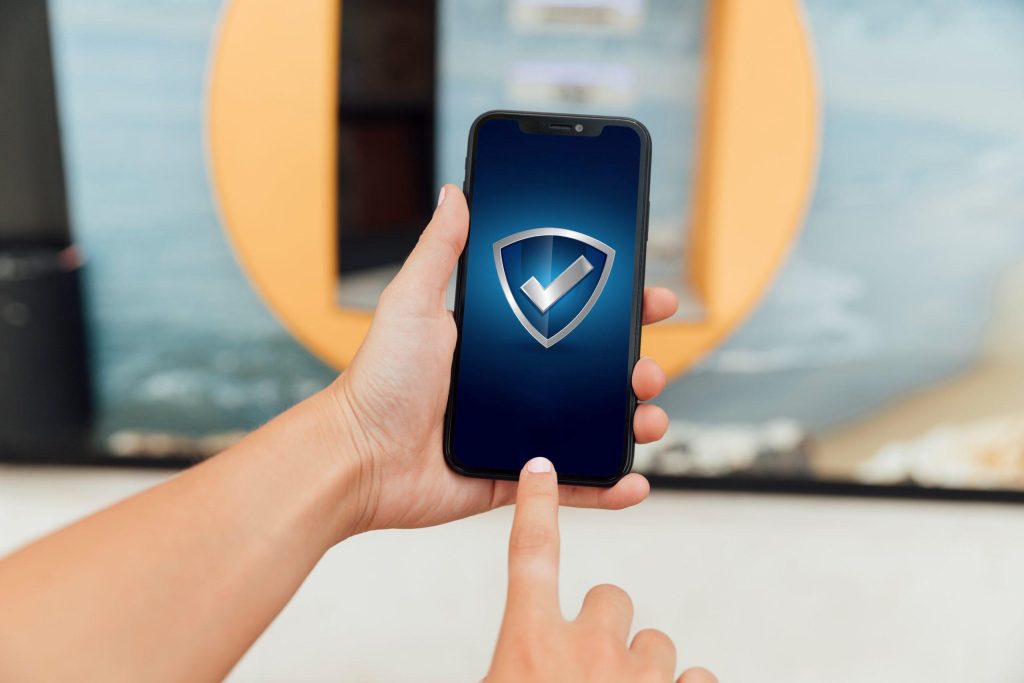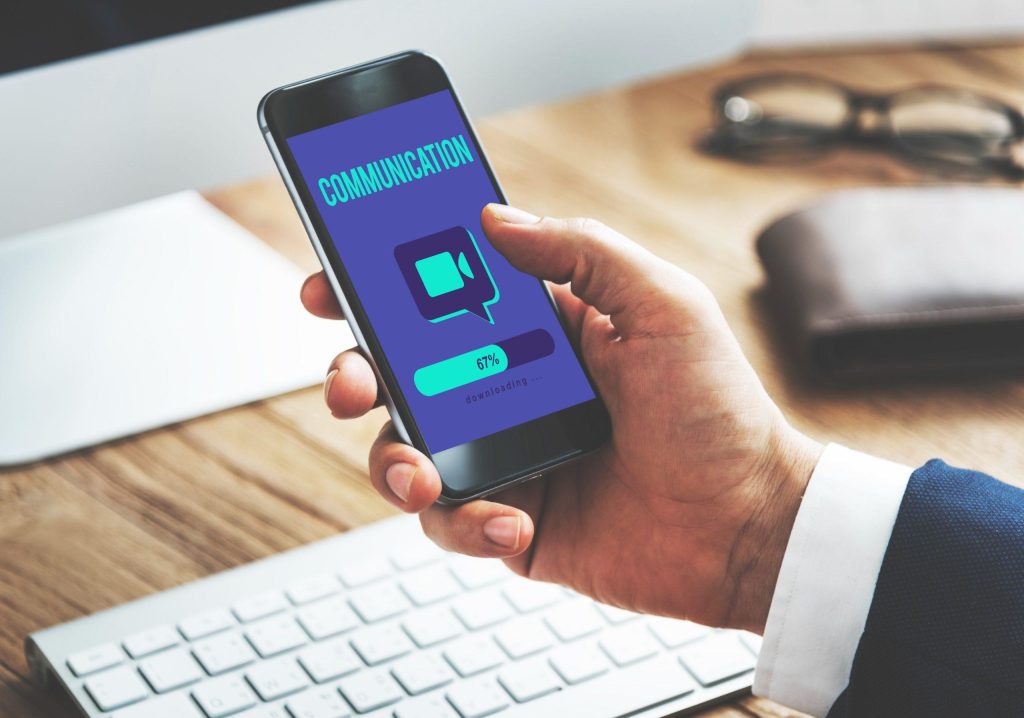In today’s digital landscape, mobile apps have become an integral part of our daily lives, offering convenience and functionality at our fingertips. However, with the increasing reliance on mobile applications comes the critical need to prioritize security measures that protect user data and privacy. Let’s explore key strategies for enhancing mobile app security in the digital age.
Top 5 Tips For Mobile App Security

- Secure Data Transmission: One fundamental aspect of mobile app security is ensuring the secure transmission of data between the app and its servers. Implementing encryption protocols like SSL/TLS (Secure Socket Layer/Transport Layer Security) helps encrypt data transmitted over networks, preventing unauthorized access and interception by malicious entities. By securing data in transit, mobile apps can safeguard sensitive user information from potential threats.
- User Authentication and Authorization: Implementing robust user authentication mechanisms is vital for mobile app security. By incorporating multi-factor authentication (MFA) or biometric authentication (e.g., fingerprint or facial recognition), apps can verify users’ identities more securely. Additionally, role-based access control (RBAC) ensures that users only have access to the data and functionalities relevant to their roles, minimizing the risk of unauthorized actions.
- Code Obfuscation and Minification: To protect against reverse engineering and unauthorized code analysis, developers should employ code obfuscation and minification techniques. Code obfuscation makes the source code more challenging to understand, while minification reduces the size of the codebase, making it less susceptible to tampering. These measures help enhance the overall security posture of the mobile app by making it harder for attackers to exploit vulnerabilities.
- Regular Security Patching: Keeping mobile apps updated with the latest security patches is crucial for mitigating known vulnerabilities. Developers should actively monitor security advisories and promptly apply patches to address potential weaknesses. Regular updates not only protect user data but also demonstrate a commitment to security and customer trust.
- Secure Offline Storage: Mobile apps often store sensitive user data locally on devices. Employing encryption techniques to secure data stored on devices adds an additional layer of security against unauthorized access. By encrypting data-at-rest using strong encryption algorithms, such as AES (Advanced Encryption Standard), apps can ensure that sensitive information remains protected even if the device is compromised.
Enhancing Mobile App Security: Best Practices for Developers

In the rapidly evolving landscape of mobile app development, ensuring robust security measures is paramount to safeguarding user data and maintaining trust. Let’s explore essential best practices that developers can adopt to enhance mobile app security in the digital age.
- Conduct Threat Modeling: Before commencing development, developers should conduct threat modeling exercises to identify potential security risks and vulnerabilities. By assessing potential threats and attack vectors, developers can implement appropriate security controls and countermeasures throughout the development lifecycle.
- Implement Secure Authentication Mechanisms: Strong authentication mechanisms are critical for verifying user identities securely. Developers should leverage industry-standard protocols like OAuth or OpenID Connect for secure authentication and authorization. Additionally, incorporating biometric authentication (e.g., fingerprint, face recognition) enhances user convenience and security.
- Apply Principle of Least Privilege: Adhering to the principle of least privilege ensures that mobile apps only have access to resources and data necessary for their intended functions. By minimizing app permissions and privileges, developers can limit the impact of potential security breaches and unauthorized access.
- Enable Runtime Application Self-Protection (RASP): Runtime Application Self-Protection (RASP) solutions offer real-time monitoring and protection against runtime threats within mobile apps. By integrating RASP capabilities into mobile app development, developers can detect and mitigate security incidents, such as code injection or tampering, during runtime.
- Perform Routine Security Assessments and Penetration Testing: Regular security audits and penetration testing are indispensable for identifying and addressing security weaknesses in mobile apps. By simulating real-world attack scenarios, developers can uncover vulnerabilities and implement remedial actions to strengthen the app’s security posture.
Conclusion

In conclusion, prioritizing mobile app security requires a proactive approach that encompasses threat modeling, secure authentication, least privilege, RASP integration, and regular security assessments. By adopting these best practices, developers can enhance the security resilience of mobile apps and protect user data in the digital age. Prioritizing mobile app security is essential in today’s digital age to protect user data and maintain trust. By implementing robust security measures such as secure data transmission, user authentication, code obfuscation, security patching, and secure offline storage, businesses can safeguard their mobile apps against evolving threats and vulnerabilities.
When safeguarding user data in the digital age through mobile app security, it’s essential to pay attention to specific aspects to ensure robust protection against potential threats. Here are key considerations and things to look out for:
- Secure Authentication Methods: Implement strong and multi-factor authentication mechanisms to verify user identities securely. Avoid relying solely on traditional username-password combinations and explore biometric authentication (e.g., fingerprint, facial recognition) for enhanced security.
- Data Encryption: Utilize robust encryption protocols to protect data both at rest and in transit. Encrypt sensitive user information stored on the device and ensure that data transmitted over networks is encrypted using SSL/TLS protocols to prevent interception by unauthorized parties.
- Secure Data Storage Practices: Adopt secure storage practices for sensitive data stored locally on devices. Avoid storing sensitive information in plaintext and employ encryption techniques to protect data from unauthorized access in case of device compromise.
- Permissions and Access Controls: Implement stringent permission models and access controls to limit app privileges based on user roles and requirements. Ensure that apps request only necessary permissions and adhere to the principle of least privilege to minimize potential attack surfaces.
- Regular Security Updates: Stay vigilant about security patches and updates for both the mobile operating system and third-party libraries used in app development. Regularly apply security patches to address known vulnerabilities and mitigate potential risks.
- Code Obfuscation and Minimization: Employ code obfuscation and minimization techniques to make it challenging for attackers to reverse engineer or tamper with app code. This helps protect intellectual property and reduces the risk of app compromise due to unauthorized code analysis.
- Secure Network Communication: Use secure network communication protocols (e.g., HTTPS) to protect data transmitted between the app and backend servers. Avoid transmitting sensitive information over unsecured networks or insecure channels that could be susceptible to interception.
- Authentication Token Handling: Implement secure handling practices for authentication tokens and session management. Use secure storage mechanisms for tokens and enforce token expiration policies to mitigate the risk of unauthorized access.
- Secure Third-Party Integrations: Vet third-party SDKs and libraries thoroughly for security vulnerabilities before integrating them into your app. Ensure that third-party services adhere to security best practices and have a robust security posture.
- User Education and Awareness: Educate users about mobile app security best practices, such as avoiding public Wi-Fi networks for sensitive transactions and recognizing phishing attempts. Empower users to take proactive measures to protect their data and privacy while using mobile apps.
The article focus on critical aspects of mobile app security and provide actionable insights for developers and businesses seeking to safeguard user data and enhance overall security posture in mobile app development.
By prioritizing these considerations and implementing comprehensive security measures, developers and businesses can enhance mobile app security and protect user data in the digital age.
For further guidance on Mobile App Security: Safeguarding User Data in the Digital Age, please reach out to us at contactus@panalinks.com. Our team is committed to helping you create accessible and inclusive digital experiences that resonate with all users.

